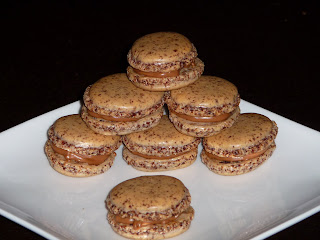I finish with dark chocolate cups filled with a decadent triple cream chocolate mousse sitting on a layer of raspberry syrup
These delicate chocolate cups took alot of time to create and perfect - again my reflection on food is parallel to that of teaching. This course has taken time and makes me so much more aware of the need to implement technology. It is often stated that "teaching is a human endeavour" so in the creation of a classroom in which I engage with students in a technologically savvy way, I will make mistakes. My strength is that I will continue to try and implement new learning tools and if they don't work well with one group of students, I can always try with another year group.
Web 2.0 encourages the development of a dynamic learner, and through the use of various activities we can target all levels of Blooms Taxonomy. There is a strong focus in Blooms on student centered learning, which is reinforced by many tools we have explored in the Web 2.0 course. While a mind mapping tool such as Bublus can be used to concisely summarise a topic by using basic recall, blog posts demand a higher order of thinking as students may be asked to critically evaluate the material covered in a syllabus, especially evident in the more controversial topics such as genetic engineering. Web 2.0 also highlights the idea that teachers no longer just disseminate information, but that students play a crucial role in collaboratively constructing their knowledge. Teachers must now facilitate the use of technology. Students are becoming global citizens simply by virtue of their interactive use of the web. The use of Web 2.0 technology and the skills that students will acquire is in line with the CEO's iLEARN model. In order to connect and engage with students we must acknowledge that they way they learn is changing, and therefore change with them.
Previous to completing this course I thought I was making use of technology in the classroom. Upon reflection I can see that I was doing this in a "Web 1.0" fashion, where students were the passive recipients of information. Students have been receptive to the introduction of mind mapping, blogging and EdModo, which has only encouraged me to continue my professional development in the area of technology. It is amazing that students are now the creators of knowledge and information, rather than just recipients.
The blog that I have posted a comment on is here
http://lorenawebtwo.blogspot.com/2011/07/module-9.html?showComment=1309947183721#c6339089612389578073
Previous to completing this course I thought I was making use of technology in the classroom. Upon reflection I can see that I was doing this in a "Web 1.0" fashion, where students were the passive recipients of information. Students have been receptive to the introduction of mind mapping, blogging and EdModo, which has only encouraged me to continue my professional development in the area of technology. It is amazing that students are now the creators of knowledge and information, rather than just recipients.
The blog that I have posted a comment on is here
http://lorenawebtwo.blogspot.com/2011/07/module-9.html?showComment=1309947183721#c6339089612389578073







